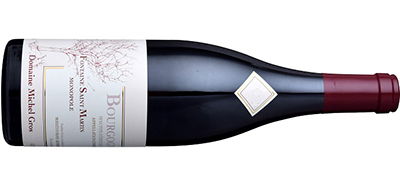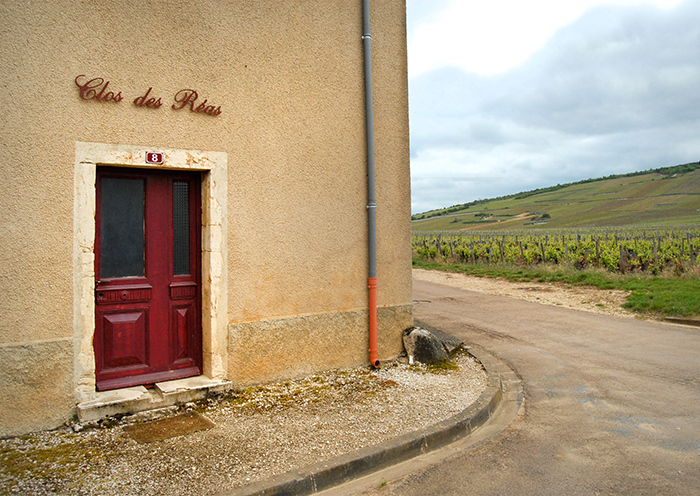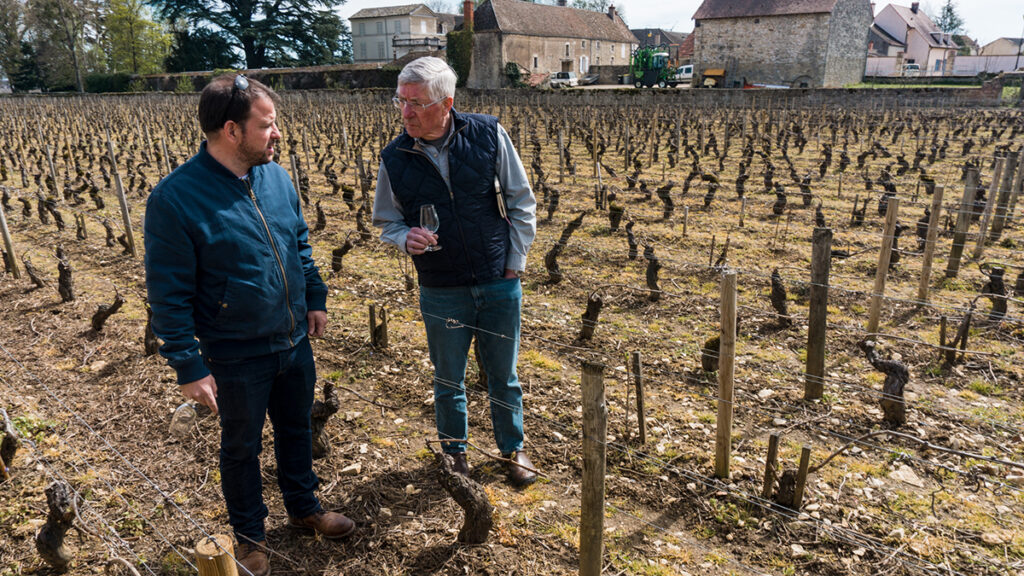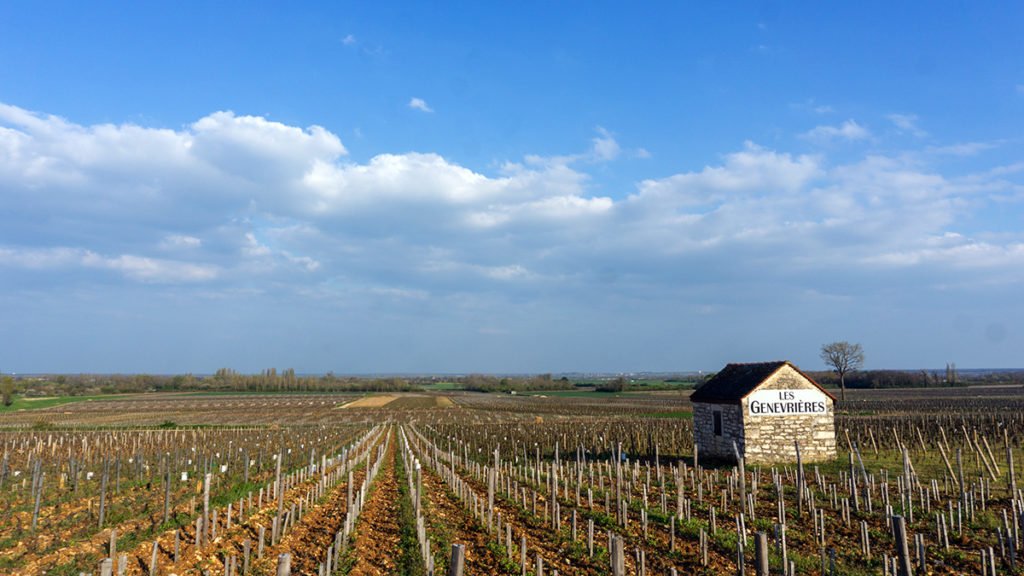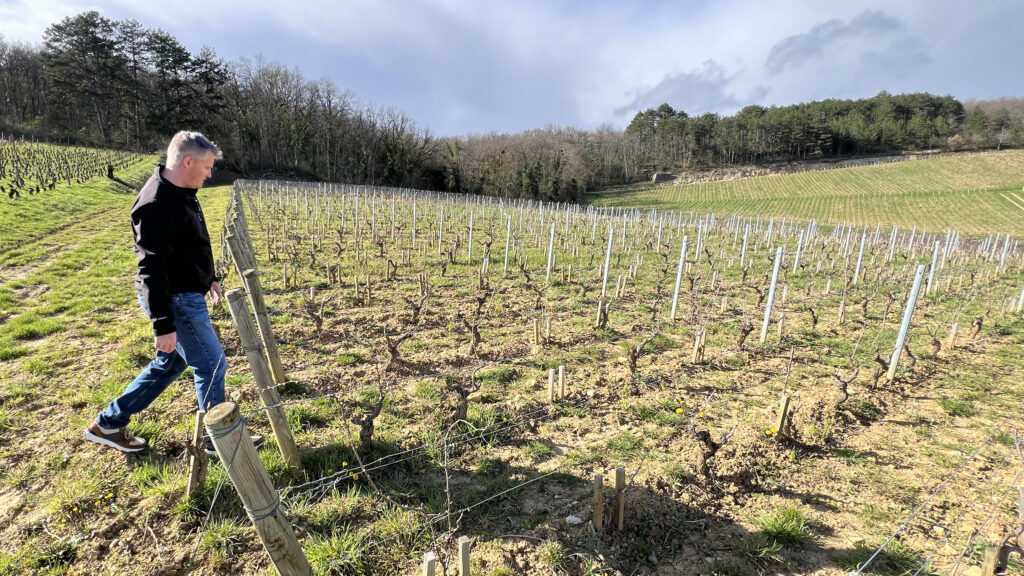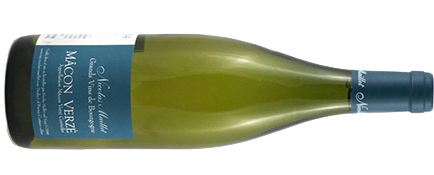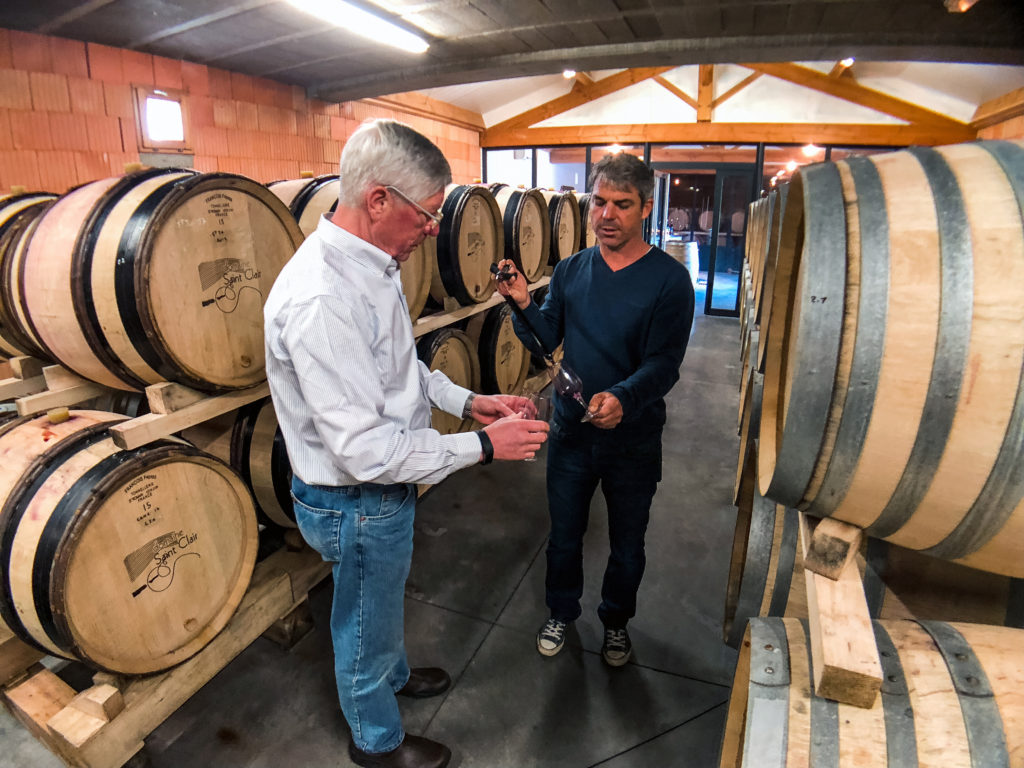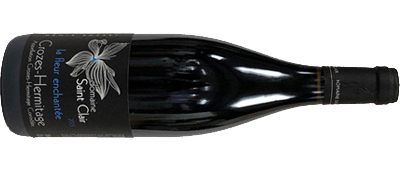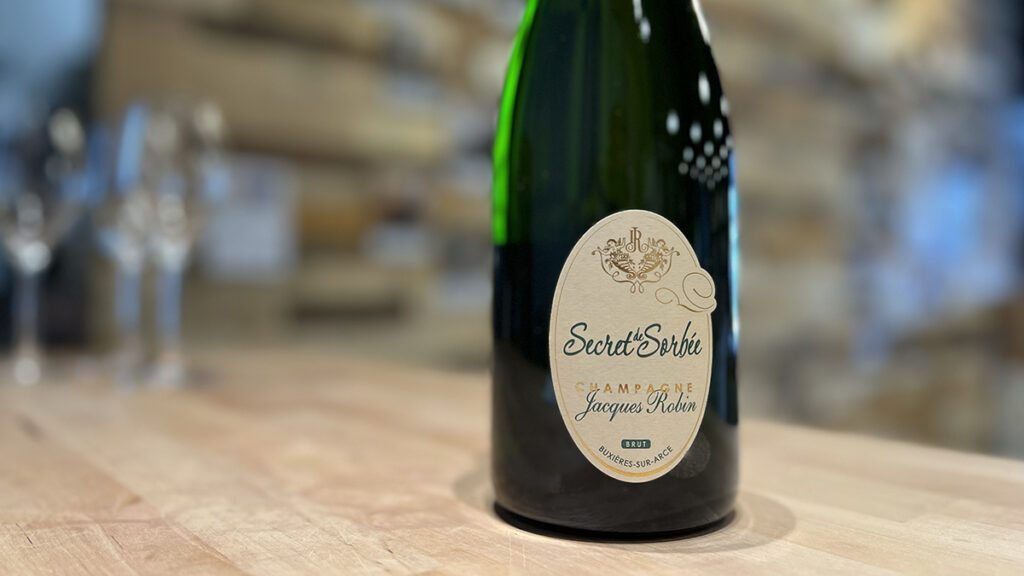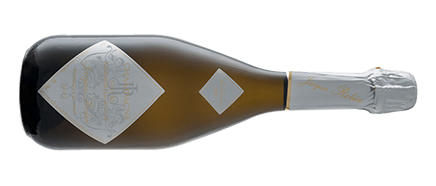We sometimes have trouble resisting the pull of new domaines – the thrill of the chase, the intrigue of discovery – it’s always tempting to pound the pavement in search of hidden gems. But to pat ourselves on the back for a second, our collection of fiftyish producers sometimes feels pretty complete. We’ve worked alongside some of these families for a quarter century – through booms and recessions, good vintages and bad, tariffs and repeals, generational handoffs, and new administrations on both sides of the Atlantic. And the grapes still come in every fall, just as they have for thousands of years. Of course if we never added another new winemaker we’d have hundreds of new wines every year. The very nature of the craft is one of perpetual renewal; each vintage arrives with a unique identity, no two exactly alike. It’s dynamic and exciting, and also comfortingly repetitive. Our final Futures Issue of the year may be light on producers (seven) and new domaines (zero), but with 45 wines from five regions, ranging in price from $16.25 to $925, we cover a lot of ground. The headline of course is the Domaine Michel Gros, and their two exciting new additions to an already stellar lineup of wines – “now a portfolio to be reckoned with” writes Neal Martin. Further south in Meursault, an exquisite lineup of white Burgundies from Boyer-Martenot, as good as we’ve ever tasted from him, and more than the few drops he made last year. We round out the Burgundy section with an ever-improving Domaine Ravaut, whose wines have recently turned a corner into an accessible and crowd-pleasing style; and Nicolas Maillet, whose everyday organic unoaked white Burgundies are honest, friendly, and exceedingly well priced. Outside Burgundy we visit Sanzay in the Central Loire Valley for tasty everyday cabernet francs without artifice or too much seriousness. We also drop in on the Northern Rhône Valley for well-priced syrahs from Denis Basset in Crozes-Hermitage. And finally a visit to the Robin family, hand crafting flat out delicious Champagnes that are mouthfilling, tasty and affordable. Note that for many wines we have reduced the minimum purchase to 3 bottles (instead of 6). Click below to place an order by the order deadline of Sunday, November 24. We will arrange for orders immediately after, and expect these wines to arrive in January. JUMP TO SECTION
Michel Gros
Boyer-Martenot
Ravaut
Maillet
Sanzay
Saint-Clair
Robin
November Futures
Order Deadline: 11/24
Domaine Michel Gros
Vosne-Romanée, Burgundy
We’re a two-generation business, so we have been particularly interested to watch the generations change at our French producers over the years. France pushes its seniors into retirement about five years earlier than does the US, but otherwise it’s much as it is here – smoother or bumpier depending on history and personalities. Michel Gros took the reins at his family’s famous domaine as a very young man after his father Jean suffered a stroke, so he had 45 years to acquire vines and refine his techniques. The transition to his son Pierre has been smooth, and because Michel is always happiest when he is in the vines, he has not disappeared from the scene. Neal Martin writes in Vinous: “I detect a change in tack rather than charting a totally different course.” So far change has been gradual – for example Pierre has moved to more organic farming techniques, is adjusting the vine canopy in the Hautes Côtes, and has a new building for stockage – but under Pierre the Domaine continues to manage the gems in its portfolio with care and diligence. This year there is also an important and delightful change: the addition of substantial parcels (about an acre each) in two of Burgundy’s most renowned Grand Cru vineyards. They come by way of a fermage lease of Gros family vines initiated long ago by an unmarried aunt. The lease has now ended and the Domaine Michel Gros has just received its share of this extraordinary terroir. In addition to the enviable portfolio of parcels in the Côte d’Or’s most storied villages, the domaine offers a great suite of wines from along their edges. As readers of last week’s opening post will have seen, the Domaine’s excellent Bourgogne Côte d’Or 2022 comes from vines just below the town of Vosne-Romanée. No waiting is required for this strikingly good value, which combines ripe black currant fruit with a pleasing texture and should drink well from the get-go. What you may not know is how well this wine holds up. Ansonia père recently discovered a case of the 2017 Bourgogne Côte d’Or in a corner of the Newton Depot, and having helped harvest its grapes seven years ago, felt entitled to spirit it away to the coast of Maine. Seven years after the harvest, it is showing beautifully, and one could be forgiven for mistaking it for a village-level Vosne. From vines over the ridge along the top of the Côte, the Domaine also makes three red cuvées and one white cuvée of Bourgogne Hautes Côtes de Nuits. Michel’s father Jean Gros was an early investor in parcels there, reclaiming and replanting vineyards that had been abandoned during the Phylloxera epidemic of the late nineteenth century. Michel continued the practice, and now the Domaine owns much ground in elevations that benefit from a warming climate. The regular Hautes Côtes red cuvée is very nice in 2022, garnering a designation from Allen Meadows (Burghound) for wines he judges to be “particularly outstanding for their respective appellations.” Vinous’s Neal Martin found it “particularly aromatic” and praised its “sweet entry” and “gentle grip.” If you want an Hautes Côtes de Nuits with a bit more flesh, consider “Au Vallon” 2022. This bottling comes from south-facing vines and with extra sun always achieves a bit more ripeness. Burghound also awarded his “ outstanding” designation to this wine, finding “sleek, vibrant and utterly delicious flavors.” Neal Martin of Vinous found “a lovely nose with rose-petal-tinged red cherry and crushed strawberry fruit.” The third Hautes Côtes red is from the lieu dit Fontaine St. Martin, a place with the same soils and subsoils as the famous Hill of Corton in the Côte d’Or proper to the south. This is more serious wine, requiring more time to round out and drink well than the others from the Hautes Côtes de Nuits. Neal Martin found “plenty of brambly red fruit on the nose” and “commendable purity.” He thought today’s “muscular” finish would ebb with time in the bottle. At the village level there is a wealth of choices. Nuits St. Georges is the town to the south of Vosne-Romanée, and its much larger acreage includes vineyards on both sides of the village. The Domaine Michel Gros has vines in both areas — on the northern side in four different lieux dits close to the border with Vosne, and on the south of the town in a single vineyard called “Les Chaliots.” The former are blended together and labeled simply Nuits St. Georges. Each cuvée has its own character. “Chaliots” is classic Nuits St. Georges, with plenty of density. Its dark pinot fruit joins with beef-broth umami notes in a wine that is robust and earthy. The cuvée blended from four Nuits plots on the other side of town more resembles Vosne-Romanée, its neighbor to the north. Here the fruit includes more floral notes and a hint of Vosne spice. It may need a bit of time for the elements to integrate, but as always it will end up as a classic, elegant red Burgundy of much finesse. Gevrey-Chambertin “La Platiere” is the latest addition to the village-level lineup. It’s a small plot, about the size of the Morey St. Denis parcel, and shows the power and dark fruit typical of Gevrey. In the 2022 Burghound found a nose of “poached plum, wild currant and warm earth,” and praised its “fine volume” and its “rich, caressing and velvet-textured middleweight flavors.” This wine shows the richness and roundness typical of Gevrey. Just up the RN 74 from Chambolle, Morey St. Denis is a small village with big terroir. In 1993, Michel acquired a parcel in a village-level vineyard at the top of its slope called “En la Rue de Vergy.” It is tiny, yielding only 1500 bottles per year, but the vineyard abuts three Grand Crus: the Clos des Lambrays, the Clos de Tart, and Bonnes Mares. Its superb soils yield a lacy, elegant wine that is among the first from the Domaine to be ready to drink. Vinous’s Neal Martin praised the 2022 as “one to look out for,” finding “cranberry, white tipped strawberry and some black fruit” with a “deft touch of tobacco.” This vineyard is on the list of candidates to be elevated to premier cru some day, and with each passing year it’s easier to see why. The domaine’s village level Chambolle was a similarly inspired purchase in 1995. It’s a blend of four different lieux dits, but two thirds of the surface is in “Argillieres,” a vineyard that abuts the great Grand Cru “Musigny.” The result is a beautiful wine whose character more resembles a premier cru Chambolle than a village one. It needs more time than village Chambolle, but its completeness and complexity more than make up for the wait. Neal Martin calls the 2022’s aromatics one of his favorites among the Domaine’s wines: “black cherries, wild strawberries, sous bois and light tobacco.” He praised the palate as “smooth with filigree tannins, well-judged acidity, and a caressing and Vosne-like finish with plenty of allure.” Wines like this help explain the widespread renown of this small village named for a bubbling medieval spring called “Champ Bouillant” or “boiling field.” Over the years both Jean and Michel added parcels at the Vosne village level, and today the Domaine’s Vosne-Romanée offers an excellent example of the village’s signature aromatic profile of spice and violets. The subsoils range from hard limestone to salmon colored marl like the marl that underlies the family’s 1er cru monopole Clos des Réas. Their combined effect is to produce a soft and elegant wine. Burghound found notes of “plum, violet, pomegranate, sandalwood, and Asian-style tea” in the nose of the 2022. He also praised its “subtle minerality” and its “chalky, lingering and well-balanced finale,” concluding: “Lovely, and a wine that should repay up to a decade of keeping.” The Domaine’s Nuits St. Georges premier cru is the sleeper of its wines at this level. It’s a blend of very old vines from Aux Murgers and Vigneronde, and so there is much millerandage (tiny “shot berries”), which make for juice of intense concentration and depth. The result is a highly age worthy wine that can be strikingly good with some years under its belt. Partly because there’s a lot more Nuits St. Georges than there is Vosne or Chambolle, this wine is priced at a substantial discount to premier crus from those villages. But make no mistake, this is superb red Burgundy, more than deserving of its premier cru classification. Anyone who buys and holds it will have a special wine in the cellar. Just across the dirt from the domaine’s newly arrived Richebourg vines (more on that later), lies a special plot in the premier cru “Aux Brûlées.” Aux Brûlées is always a beautiful wine, a bit slower to mature than Réas, but like Réas is a classic exemplar of the village’s special character. The 2022 is a stunner – an explosive nose of wild cherries and violets, and a palate dripping with inky, perfectly extracted fruit. In this vintage, Neal Martin found “enticing scents of red-currant jam, white-tipped strawberries, and dried white flowers.” Burghound found “red and black pinot fruit, plum and exotic tea scents,” and praised its “utterly delicious and seductively textured medium weight flavors.” The Domaine’s flagship is its Vosne-Romanée 1er cru monopole “Clos des Reas,” a wine capable of giving much pleasure in its youth but which also ages gracefully. As Jasper Morris explained in his seminal book Inside Burgundy, “It makes a supremely elegant Vosne premier cru, relatively low in acid, but the softness is deceptive: the wine ages remarkably well.” The key to this magic may be the well-draining salmon colored marl that underlies it, but in the end the truth of the proposition is in the bottle. Both Ansonia père and Ansonia fils have fond memories of helping to harvest this parcel, and wine from many vintages inhabits the family cellars. Neal Martin called the 2022 vintage “one of the best examples that I gave tasted in recent years,” praising its “perfumed, floral bouquet” and a palate “lightly spiced with fine tannins.” While either of these Vosne premier crus will be very enjoyable in just a few years, buyers would be well advised to hold some bottles longer. Not long ago we opened a magnum the 2012 and a bottle of the 2009. Both were real head turners, complete and complex wines that showed fruit, spice, earth and more, and lingered enticingly on the palate. With all the excitement about the new grand crus, don’t forget the Domaine’s tiny plot in the best part of the Clos Vougeot, which Jean Gros purchased in his son Michel’s name for his eleventh birthday. (Michel reports being disappointed, having hoped at the time for a new bicycle instead.) The 2022 is a big wine, according to Neal Martin: “one of the fleshiest, more corpulent Clos de Vougeot wines that I met.” Burghound, too, found “richer, more powerful and more complex broad-shouldered flavors.” Martin also praised its “refined bouquet, understated at first, opening with black cherries and red plum scents, a touch of rose bush in the background.” This wine ages beautifully, turning regal and poised as it reaches past a decade. But for the arrival of an acre of Richebourg, the acre of vines in Èchezeaux Grand Cru’s lieu dit “Les Loächausses” would have led the celebration of new vines. Loächausses is in the center of Echezeaux’s middle band, which many experts have long thought to be the best sector of this grand cru. Indeed, the Domaine’s debut vintage 2022 has garnered fulsome praise, with Neal Martin rating it just a tick behind the Richebourg, finding the palate “smooth and harmonious, quite plush in style;” and the finish “long and harmonious.” We found the wine terrific from barrel – concentrated and spiced with notes of black tea and licorice along with cassis and plum. Richebourg is among the most famous vineyards in the world, full stop, behind perhaps only Romanée-Conti and La Tache in status. The plot has been in the Gros family for centuries, and was under a 60-year lease from Michel’s aunt Collette to the Domaine Gros Frère et Soeur. In 2022 the lease expired and the vines landed in the Michel Gros portfolio for $0.00. Had the vines reached the market, we can only imagine how many zeros would be attached. As expected, our allocation of this wine is miniscule, so we’re also offering it by the bottle. At our barrel tasting in March the 2022 Richebourg every bit lived up to its substantial billing – it was like drinking four wines in one: incredible length, perfectly detailed, impeccable balance, and layers upon layers of silky flavor. Neal Martin of Vinous writes “dark berry fruit, forest floor, hints of morels and light graphite aromas,” awarding 94-96 points. He characterizes it “a more elegant take on Richebourg…harmonious with a satin texture, a peacock’s tail towards the finish,” concluding “this marks a very impressive debut.” In the face of these red wine riches, the Domaine’s sole white from Chardonnay seems almost an afterthought. But it’s a terrific bottling and not one to ignore. It’s from the Hautes Côte’s Fontaine St. Martin, and shows that a skilled maker of red Burgundy can also show a deft touch with white. Neal Martin found “good weight and energy” and a “fresh nose of yellow fruit, hints of nectarine, and chai tea.” At about $35 per bottle, it offers excellent value for a barrel-raised Burgundy.

MICHEL GROS Bourgogne Côte d’Or 22: $350 Nuits-St-Georges 22: $750 Nuits-St-Georges 1er 22*: $1,295 Clos Vougeot Grand Cru 22*: $3,300 Hautes-Côtes “Fontaine-St-Martin” blanc 22: $425
(case prices)
Hautes-Côtes de Nuits rouge 22: $365
Hautes-Côtes “Au Vallon” 22: $395
Hautes-Côtes “Fontaine-St-Martin” 22: $395
Nuits-St-Georges Chaliots 22: $795
Gevrey-Chambertin 22: $850
Morey-St-Denis 22: $895
Chambolle-Musigny 22: $1,195
Vosne-Romanée 22: $1,195
Vosne-Romanée 1er “Brulees” 22: $1,995
Vosne-Romanée 1er “Réas” 22: $1,995
Echezeaux Grand Cru 22*: $3,540
Richebourg Grand Cru 22* (sold by the bottle): $925/bot
(wines marked * available by the quarter case, otherwise all wines available by the case and half-case)
Boyer-Martenot
Meursault, Burgundy
As we wrote last Sunday, Vincent Boyer is a winemaker at the top of his game, farming an extraordinary collection of terroirs in and around his hometown of Meursault. His wines range from $250 a case to $250 a bottle, but each one is made with care and precision. With vineyards nearly through the EU organic certification, and an extended 24 month elevage for all cuvées, Boyer’s wines have never been better. (What’s more, after a price spike caused by last year’s catastrophic vintage where some plots lost 90% from hail, Boyer actually lowered his prices this year – about as unheard of in Burgundy as disinflation is over here.) We begin with Boyer’s two terrific regional-level wines: Aligoté and Bourgogne Côte d’Or. Aligoté continues to enjoy its time in the Burgundian spotlight. The traditional Burgundian grape varietal has always made up about 10% of the region’s white vines, but a new group of self-titled “Aligoteurs,” spurred on by warmer, drier summers and a hunt for value, have championed the grape and have pushed its possibilities of expression. And you’d expect from the hottest, driest vintage yet, Vincent’s 2022 Aligoté is terrific. Burghound awarded it both his “top value” and “outstanding” designations, finding it “sleek, delicious and nicely concentrated’ with “a lovely sense of vibrancy,” concluding “an excellent example of the genre.” Back in Chardonnay-land, Boyer’s Bourgogne Côte d’Or blanc comes from vines near Meursault, and it shows. This cuvée never sports the depth or longevity of Meursault proper, but the golden notes of hazelnut and baked lemon reveal its top location. Aged in oak for a year and then in concrete eggs for another year, this is as good as sub-$30 Burgundy gets. Burghound found the nose “elegant” and “exuberantly fresh,” with “delicious and equally vibrant flavors” in the mouth. Boyer has two village-level Meursault cuvées, with opposing terroirs and characters. The first, “Ormeau,” comes from vines in clay rich soil planted by Vincent’s grandmother in 1924 – celebrating their centenary this year. Ormeau is prototypical Meursault: rich, opulent, shimmering white Burgundy that fills out the mouth. As always with Boyer the balance is impeccable – Burghound cites “underlying tension” and “a subtle bead of minerality” with a “clean and nicely dry finale,” concluding “delicious.” Pour this by a fireplace this winter and you’ll forget all about red wine. Up the slope from the village and just south lies “Narvaux,” considered by many to be the best village-level plot in Meursault. One taste of Boyer’s bottling and you’ll find little to contradict that reputation. The terroir gives more stoniness and tension – a boon in these times of intense, concentrated juice – and though it’s higher toned than Ormeau, the balance is just right again. Burghound (again) awarded both “outstanding” and “top value” designations to the 2022 Narvaux, citing “taught muscularity” with “a powerful and mouthcoating finish” calling it a “beauty of a Narvaux.” Boyer’s mouthwatering collection of vines at the premier cru level has produced another exquisite trio in 2022. From the ultimate Meursault trifecta of top vineyards – Charmes, Genevrières, and Perrieres – Vincent makes tiny quantities of extraordinary wine. (All three received Burghound’s “Outstanding” designation, scoring between 90 and 94.) Boyer’s Meursault 1er Charmes, usually the fattest and richest of the bunch, is excellent again this year. The nose is deeply floral with notes of pear and stones. The mouth is fresher and more vibrant than usual this year, with a touch of sucrocité balanced on a beam of tension. Burghound similarly found “excellent energy” and a “tension-filled, linear finish.” He counsels drinking after 2030, but given how well the 2022s are drinking already (“difficult to resist” says Vincent himself), this will be terrific even next year. Genevrieres is often more spiced than the other two premier crus, and this year is no different. White pepper and white tea mix with stewed pears and baked lemons; the nose is so remarkable you might forget to drink it. But once you do, the mouth explodes with broad intensity of flavor and a chiseled finish. Burghound found “elegant, medium-bodied flavors,” with a “clean, very dry, and sneaky long finale.” This “beauty exudes the innate class of a fine Genevrières.” Finally Perrieres, the perennial grand cru in waiting. Known for its power and regal depth, Boyer’s is, in Burghound’s words, “textbook Perrières.” The nose shows yellow fruits, pear tart, a hint of reduction and buttered toast. The mouth is exceptional – rich and bold and muscled with a sleek texture and extremely long finish. Burghound found it “delicious” and succulent,” with a “cuts-like-a-knife finish” amid the lush fruit. He counsels 2032+ to hit peak, and if you have the space and patience, this is a candidate for serious cellaring. Vincent also farms two small parcels in neighboring Puligny-Montrachet. The stony terroir here gives wines with more definition and solidity – many consider Puligny the height of Chardonnay expression – and Boyer’s cuvées at the village- and premier cru level are classics. (Burghound gave both – stop us if you’ve heard this before – “outstanding” designations and scores between 90 and 94.) Reuchaux, a small village plot right near the town, offers excellent value for its class, and is unusually good this year. The nose is stony and austere, with dried flowers, apple, lemon, and stones. The mouth is laser-focused and extremely elegant, with finely channeled sucrocité balanced on a chiseled stony core. “A lovely Puligny villages,” writes Burghound. Lastly, Puligny-Montrachet 1er cru “Cailleret” – a tiny five-owner premier cru just stone’s throw from the Grand Cru Chevalier Montrachet. The nose is extremely Puligny, intensely concentrated and very fine. The mouth shows superb tension over a core of dry stone fruit and faint spice. Burghound found “voluminous, sappy and intensely mineral-driven middleweight flavors,” calling it an “extremely classy and elegant wine.”
BOYER-MARTENOT Bourgogne-Aligoté 22: $250 Meursault “Ormeau” 22: $895 Puligny-Montrachet “Reuchaux” 22: $995
(case prices)
Bourgogne Côte d’Or blanc 22: $350
Meursault “Narvaux” 22: $895
Meursault 1er “Charmes” 22*: $1,695
Meursault 1er “Genevrières” 22*: $1,895
Meursault 1er “Perrières” 22*: $2,095
Puligny-Montrachet 1er “Cailleret” 22*: $2,995
(wines marked * available by the quarter case, otherwise all wines available by the case and half-case)
Domaine Ravaut
Ladoix, Burgundy
About half-way between Boyer and Gros, at the border between the Côtes de Beaune and the Côte de Nuits, lies the tiny appellation of Ladoix, at the base of the hill of Corton. Here the Ravaut family has made wine for generations, traditional cuvées of both colors that today offer unusually good pricing. This is one of the corners of Burgundy where winemakers will somewhat sheepishly admit that, aside from frosts and hailstorms (a big aside), climate change has improved their wines. Vincent and his sons have taken this opportunity and run with it – they’ll be certified EU organic as of this vintage, they’ve dialed back oak, and, crucially, have abandoned “pigeage” (punching down) to extract their wines. Once necessary to pull color and flavor from grapes in vintages on the margins of ripeness, their crop now arrives at harvest with enough concentration to ferment more gently. The resulting wines are smoother, beautifully balanced, and simply delicious young. We were extremely impressed with the 2022s at Ravaut, undoubtedly their best vintage yet, and a sign of good things to come. We’re pleased to offer four reds and two whites. First a Bourgogne Côte d’Or rouge 2022. The nose is dark and plummy with juicy notes of wild cherries and earth. The Ravauts elected not to filter this wine this year, and the result is a juicy and effortlessly enjoyable glass of red Burgundy. It’s not refined or particularly complex, but it way overdelivers its sub-$25 price. Next up, two wines from the villages – a Ladoix 1er cru from Bois Roussot and an Aloxe-Corton blend from a few different plots. The Ladoix is always one of our favorite wines here – dark and inky with sappy concentration and an elegant earthiness. The 2022 is beautiful in the nose showing violets and cassis; the mouth is lush and muscled, with serious concentration for its level. We think this will drink well over the next 3-4 years. Just south in Aloxe Corton, Vincent blends three parcels into a terrific village-level cuvée. The nose here is deeper, a gorgeous mixture of black currants, licorice and toast. The mouth is considerably finer and more precise than the Ladoix, with a longer finish and very focused mouthfeel. This is classy wine and a candidate for mid-term aging, say 3-5 years. Finally, the Grand Cru is indeed grand in 2022. From the Bressandes sector in the heart of the hill of Corton, this is rich, beautiful wine. The nose is deep and brooding with wild cherries, plums, baking chocolate and spice. The mouth is dense but firmly structured, with dried flowers and a muscly core of stewed fruit. This will require some time, but should age terrifically; a true Grand Cru under $85. Ravaut’s whites have also improved in recent years. His Ladoix “Hautes Mourottes” cuvée is a blend of premier cru and village level wines, and it shows – there’s terrific concentration and length. The nose is gorgeous, showing white flowers, almond, sweet cream butter and citrus. Wine writers have described it as a “Baby Corton Charlemagne” and that’s particularly true this year. Of course Ravaut also has the real McCoy, the Grand Cru Corton-Charlemagne. This too is exquisite in 2022 – powerful and rich with a massive nose and deep, concentrated aromas. It’s extremely dense and long in the mouth but with a startling freshness and very energetic texture. In short, this has tons of everything, and will be the most impressive wine of either color on most dinner tables. We anticipate this peaking after 2-4 years in the bottle.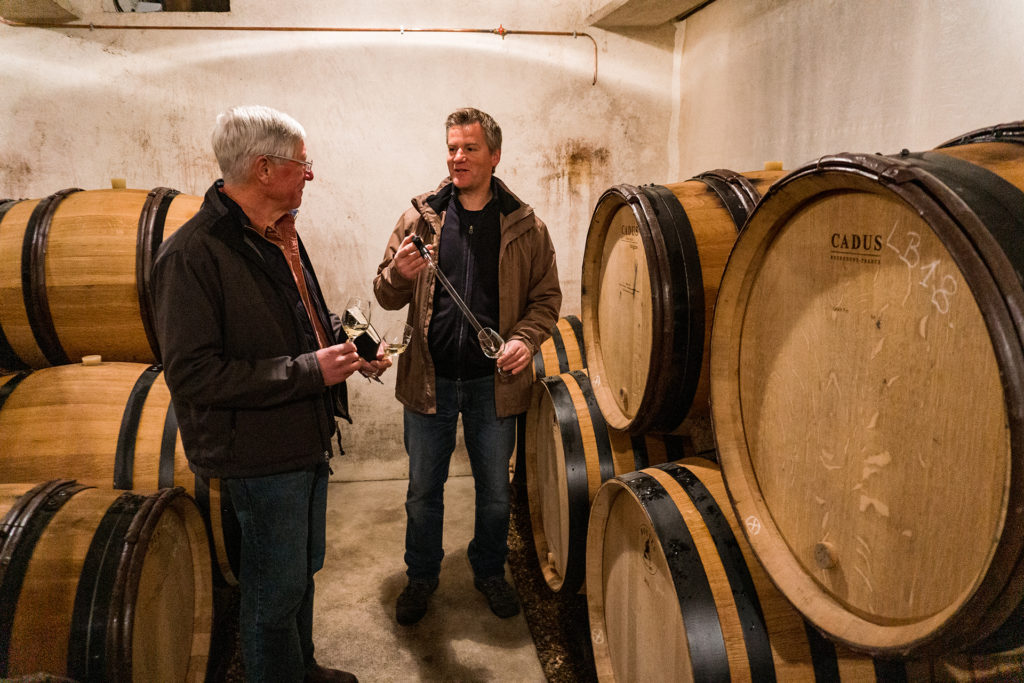
RAVAUT Bourgogne rouge 22: $295 Ladoix “Hautes Maurottes” blanc 22: $595
(case prices)
Ladoix 1er “Bois Roussot” 22: $495
Aloxe-Corton 22: $595
Corton “Bressandes” Grand Cru 22: $995
Corton-Charlemagne Grand Cru 22*: $1,595
(wines marked * available by the quarter case, otherwise all wines available by the case and half-case)
Nicolas Maillet
Verzé, Maconnais, Burgundy
We arrived at Nicolas Maillet’s door several years ago based on a tip from another local vigneron. Nicolas is a bear of a man who has embraced organic farming and biodynamic winemaking with discipline and enthusiasm. Maillet relies on indigenous yeasts for spontaneous fermentation, and never rushes the process, allowing it to proceed for months if the slow fermentation in his cool cuverie so requires. Today we recommend two of his wines. The Macon-Village 2022 features clean and pure chardonnay fruit with plenty of energy. In the mouth it is round and pleasant, with just enough gras to fill the palate. Because there’s no oak influence, it’s an excellent choice for crustaceans and shellfish. Look for notes of honey, tangerine, stones and a mouthwatering freshness. Maillet’s Macon Village 2022 should make a particularly nice match for oysters on the half shell. The Macon-Verzé 2022 is bigger wine, with noticeably more gras and roundness. Neal Martin called it “lovely” and awarded it 90 points, praising its “crisp nose of lemon rind and crushed stone.” He found the palate ”medium bodied with pretty white and yellow fruit.” This wine should stand up well to the more robust flavors of butter-basted fish or roast chicken. These wines don’t offer quite the complexity and elegance of those from nearby Forces Telluriques, but they’re priced for everyday drinking. We always keep some of Maillet’s wines around and reach for them often.
Domaine des Sanzay
Saumur-Champigny, Loire Valley
The Loire Valley continues to be one of the most exciting corners of winemaking in France. Organic viticulture, balanced wines, and affordable prices are the rule here rather than the exception. We find ourselves reaching for Loire reds often these days, whatever the occasion – they’re characterful, refreshing, complex and downright tasty. Our favorite source for these delicious reds is the Domaine des Sanzay, an organic fixture of Saumur-Champginy in the central Loire. Their unblended Cabernet Franc wines have become highly popular in our warehouse, with their simple Saumur red and old-vine cuvée opening tasters’ eyes to a new expression of the grape. The 2023 Saumur Champigny is lively and expressive in the nose – cranberry and spring flowers burst forth with no seriousness or oak. The mouth is surprisingly silky, juicy and refreshing with a quick clean finish and low alcohol. This cuvée is always easy to like, but the 2023 is particularly gulpable. Drink on its own, particularly in the springtime. The Saumur-Champigny Vieilles Vignes spends a year in big barrels, and so the 2022 is on offer. It’s darker and more serious – the old vines bring concentration and depth of flavor. This lasts far longer on the palate, with more supporting tannin. The nose is dried roses and wild cherries; the mouth is dark and rugged with earthy notes and a delicious saline finish. Drink this with pizza, and don’t be afraid to get the spicy one. This year it was Sanzay’s parcellaire cuvée “Les Dares” that grabbed our attention. Drawn from a single plot of 65+ year old cabernet franc, this is an impressive wine. The nose is very fine and detailed, with a distinct note of honeysuckle over the red apple fruits and violet petals. The mouth is fine grained and concentrated with perfectly balanced tannin and a clean, dry finish. This dramatically outperforms its $25 billing; we’d happily list it on our site for $40. Decant for a half hour and serve with stews or duck or steak.
Domaine Saint-Clair
Crozes-Hermitage, Northern Rhône
Compared to the Southern Rhône with its vast acreage of Côtes du Rhône and its complex of villages near Châteauneuf du Pape, the Northern Rhone is tiny. Yet it is in this location that Syrah finds its greatest expression anywhere. In the Northern Rhône, Syrah doesn’t share the spotlight with Grenache, its blending partner in the South. And as in Burgundy, which has limited real estate and relies on a single grape for almost all of its reds, scarcity keeps the prices up for wines in the most famous appellations such as Côte Rotie, Cornas, and Hermitage. Fortunately there is all-Syrah wine from the Northern Rhône at more modest prices. Crozes-Hermitage lies not far below Hermitage on the left bank of the Rhône, and its wines are the most affordable in the region. Our source there for many years has been Denis Basset’s Domaine Saint Clair. Basset’s family has grown grapes (and flowers) in the town of Beaumont-Monteux for generations; but more than a decade ago, after a near-death experience with a high voltage line, he resolved to take over the family’s vines and to create his own domaine. The 2022 vintage was kind not only to Burgundy: growing conditions were also exemplary in the Northern Rhône. When we tasted the Etincelle 2022 from the barrel, Denis remarked that he thought 2022 his best vintage ever of the wine. (The word “Etincelle” means “spark” in French, and the name for the cuvée is in homage to his near-electrocution.) “Etincelle” 2022 is indeed delicious. With 13% alcohol it retains its freshness, and when we tasted it in the bottle a few months ago it was nicely balanced, with good weight, a pleasant mouthfeel, and a longer than usual finish. At the price you can drink it early and often. Basset also makes an old vine cuvée called Fleur Enchantée. There’s more oak, and more extraction, so the wine peaks later than Étincelle. When we tasted the 2022 a few months ago it was still coming together, but with a bit more time in the bottle it should be just fine. Fans of this wine will enjoy it in due time, but if your drinking horizon is within the next 12 months, we suggest Etincelle. St. Joseph, on the right bank of the river, is the other Northern Rhône appellation where value can sometimes be found. It’s priced between Crozes-Hermitage and the bigger names, but it is also a more serious wine with aging potential. Basset has a small parcel there, on a bank so steep that vineyard work must be by hand. As usual, he named the wine with a smile: “Les Abimes de l’Enfer,” or “The Abyss of Hell.” It is usually his finest red, and particularly impressive in 2022. There is a ripe nose with some earth coming through alongside the fruit. At 13.5% alcohol, it is well-balanced and sophisticated on the palate. Right now its tannins are more prominent than in the Crozes, but we have every expectation that they will round out soon. The excellent weight and very nice finish suggest that this wine should be a star in three or four years. Finally, Basset has a white Crozes-Hermitage that makes a terrific apéritif. It’s a blend of 70% Marsanne and 30% Roussanne raised for 9 months in oak barrels. The result is a round, mouth filling and unctuous wine with excellent aromatics. For many years every drop of this wine went to enthusiastic local restaurants, but eventually Denis was able to add enough volume to allocate some to us. Pour a nicely chilled glass of this at the end of the day and let the combination of white peach and tropical fruits unfold as it warms up. It’s a great way to start a meal.
Maison Jacques Robin
Côtes des Bar, Champagne
The Côtes des Bar and Chablis are both satellite sectors of their regions (Champagne and Burgundy respectively). They’re each about ninety minutes’ drive from the main drags, but happen to be pretty close to each other. Chablis continues to be a source of terrific value in white Burgundy, and the Côtes des Bar offers similarly well priced Champagne. Our producer here, Jacques Robin, produces delicious Champagne cuvées entirely by hand – they’re accessible, characterful, and wine-first. We usually import Robin’s two pure pinot noir cuvées – the clay rich soils of the Côtes des Bar are well suited to the red grape – but this year we’re beginning with their Blanc de Blancs. The Cuvée Topaze Brut is 100% Chardonnay, and very well balanced. It’s drier and more focused than the pinot cuvées, offering notes of dried white flowers and buttered toast. Its mouthfeel is chiseled and refined, with good length and a clean dry finish. It’s more buttoned up than Robin’s other cuvées. Robin’s pinot cuvées are friendly, gourmand, and delicious, with mouthfilling textures. Both wines on offer in this issue will be familiar. Secret de Sorbée is Robin’s pure Pinot Noir non-vintage Champagne, and majority of the current release is from the 2019 vintage. It’s as beautiful as ever, and maybe more so. The nose is deep and delicious, with loads of depth and earthy richness. The barrel aging is apparent, resulting in toasty notes with the fruit. Look for raspberry jam alongside buttered toast and violets. The mouth is plush and palate-coating, showing plum, butter, and minerals. It’s a perfect aperitif wine, round and delicious on its own. Whenever we open this wine, we promptly run out. The 750s are $41.25, so at less than $9 a glass you won’t need much excuse to open one. We’re also pleased to offer the wine in magnum – it’s hard to think of a more festive sight than a double-bottle of Champagne, and the Secret de Sorbée mags don’t even break triple digits. Robin’s vintage cuvée is called Kimmerdigienne, a nod to the famous limestone in the local soil. This is our second importation of the 2012, and it’s become a real favorite among readers. The nose is a stunner, with notes of almonds, apricots, praline, and chalk. The mouth is delicious and complex, with notes of seashell, lemon zest, kiwi, brioche and vanilla. The 2012 has 6g dosage, and the mouthfeel is concentrated and chewy, and we think will impress just about anyone with a taste for bubbles.
_____________________________ If you have any trouble submitting the new order form, you can always email us your order. Or give us a call with questions: 617-249-3657, or tom@ansoniawines.com The deadline to place orders for this issue is: SUNDAY, NOVEMBER 24. Questions? Need advice? Call us: (617) 249-3657. OPTIONS FOR GETTING YOUR ORDERS Pick-up near Philadelphia. We’re pleased to restart our PA pickup option. Wines ordered for PA pickup will be available in the winter/spring, depending on temperatures. Email us for more details. Shipping elsewhere. In most states we can arrange for shipping at an additional cost that varies by location ($3.50 per bottle to the addresses west of Chicago; $2.50 per bottle east of Chicago). If shipping interests you, let us know the state and we will figure out if it can be done.
We expect these wines in January 2025
Pick-up in Massachusetts. We store our inventory at our new warehouse in Newton: 12 Hawthorn St, Newton MA 02458. Futures customers can pick up their orders here during Saturday open hours, or by appointment.

